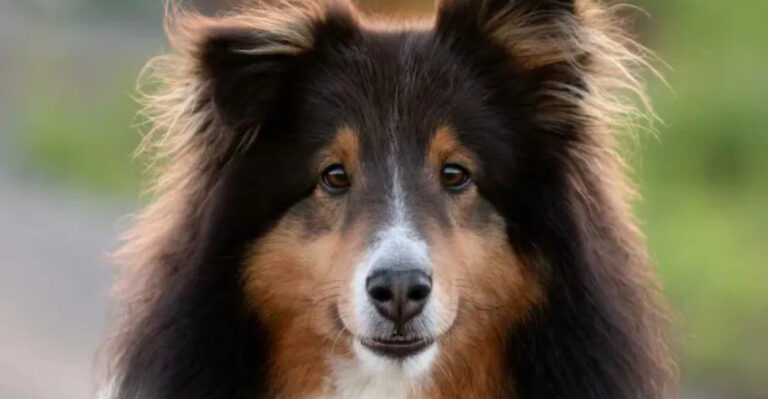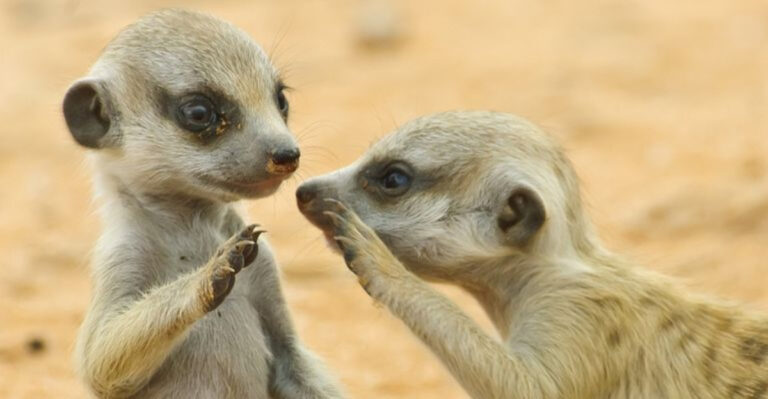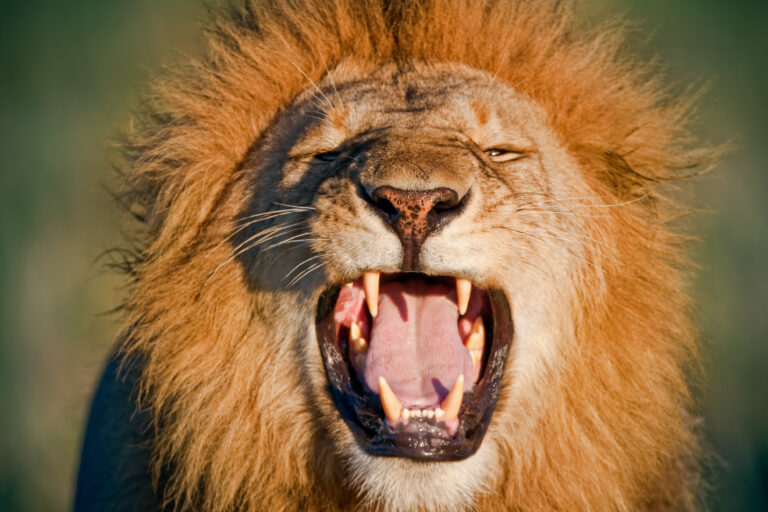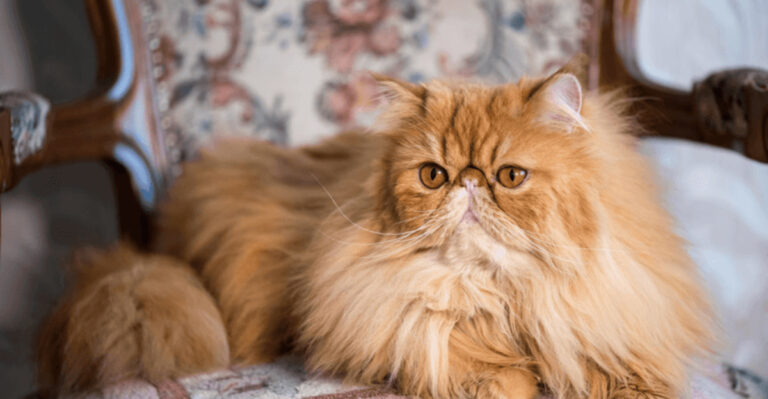10 Pets Your Cat Will Despise And 7 It Might Actually Befriend
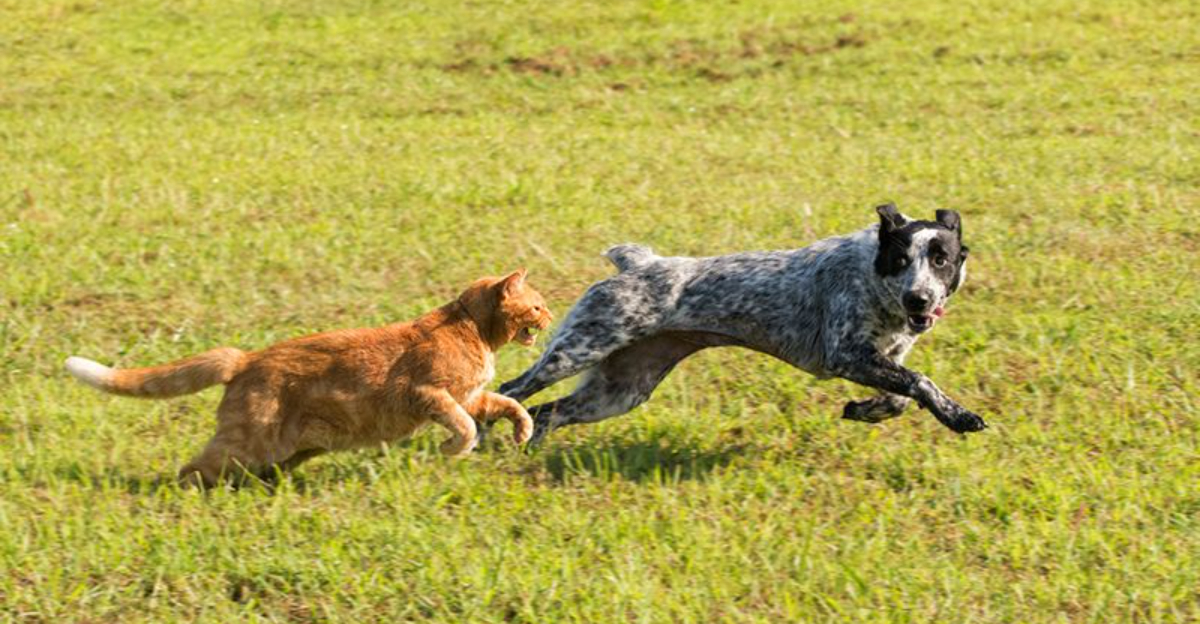
Cats are known for their unique personalities and sometimes mysterious behaviors. While they can be loving and playful companions, their instincts and preferences can make them picky about their friends.
1. Other Cats (Especially Territorial Ones)
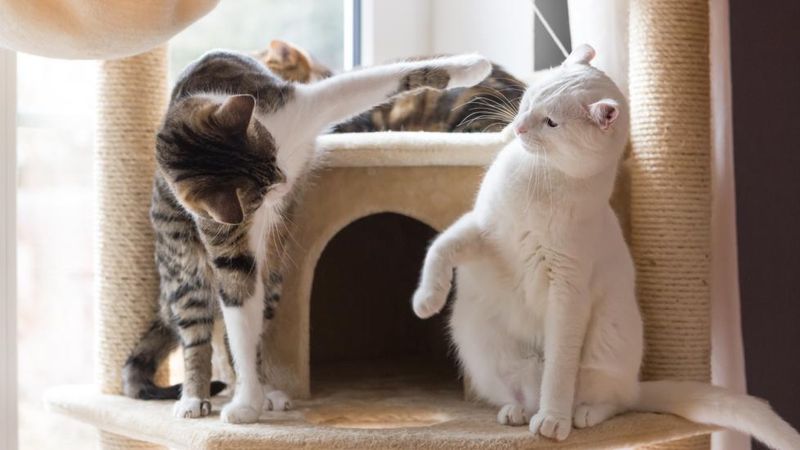
Cats are fiercely territorial. Introducing a new cat into their space can be like setting off a territorial alarm. You might find them hissing and swatting to assert dominance.
The competition for resources like food, litter boxes, and favorite napping spots can add fuel to the fire. It takes patience and gradual introductions to ease these tensions and foster a peaceful coexistence.
2. Rabbits
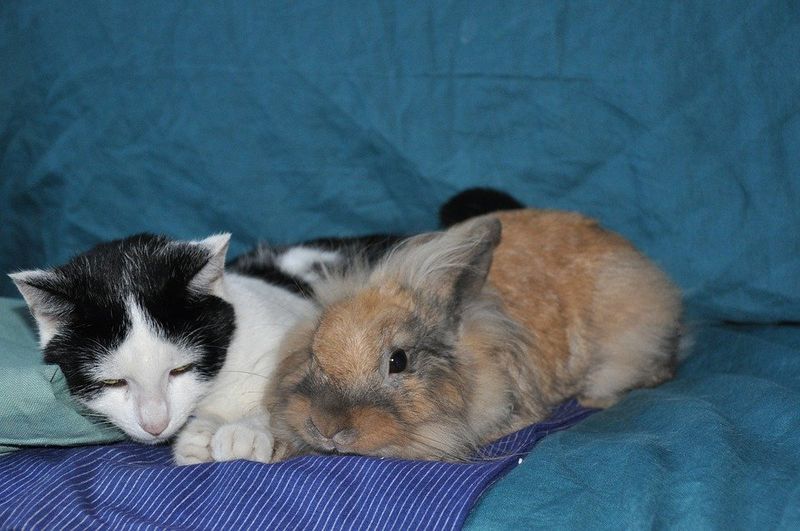
Cats can be cautious around rabbits, often due to the rabbit’s unpredictable movements. The sudden hops and dashes can startle a cat and put them on edge.
Though they might initially seem wary, with careful introductions and supervision, some cats and rabbits can learn to share a space without conflict. It’s all about building trust over time.
3. Birds (Especially Larger Species)
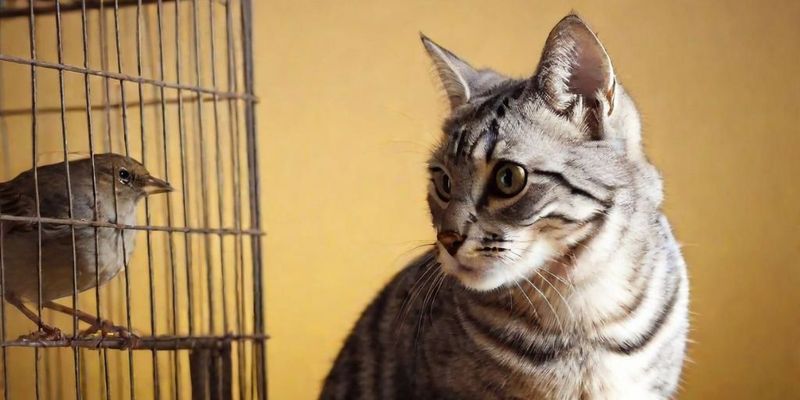
Ever notice a cat’s intense focus on a bird? It’s that predatory instinct kicking in. Larger birds, with their vibrant movements and sounds, can excite or stress a cat.
It’s quite the spectacle, but it’s crucial to keep interactions supervised. The cage should be secure, ensuring the bird’s safety while satisfying the cat’s curiosity from a safe distance.
4. Guinea Pigs
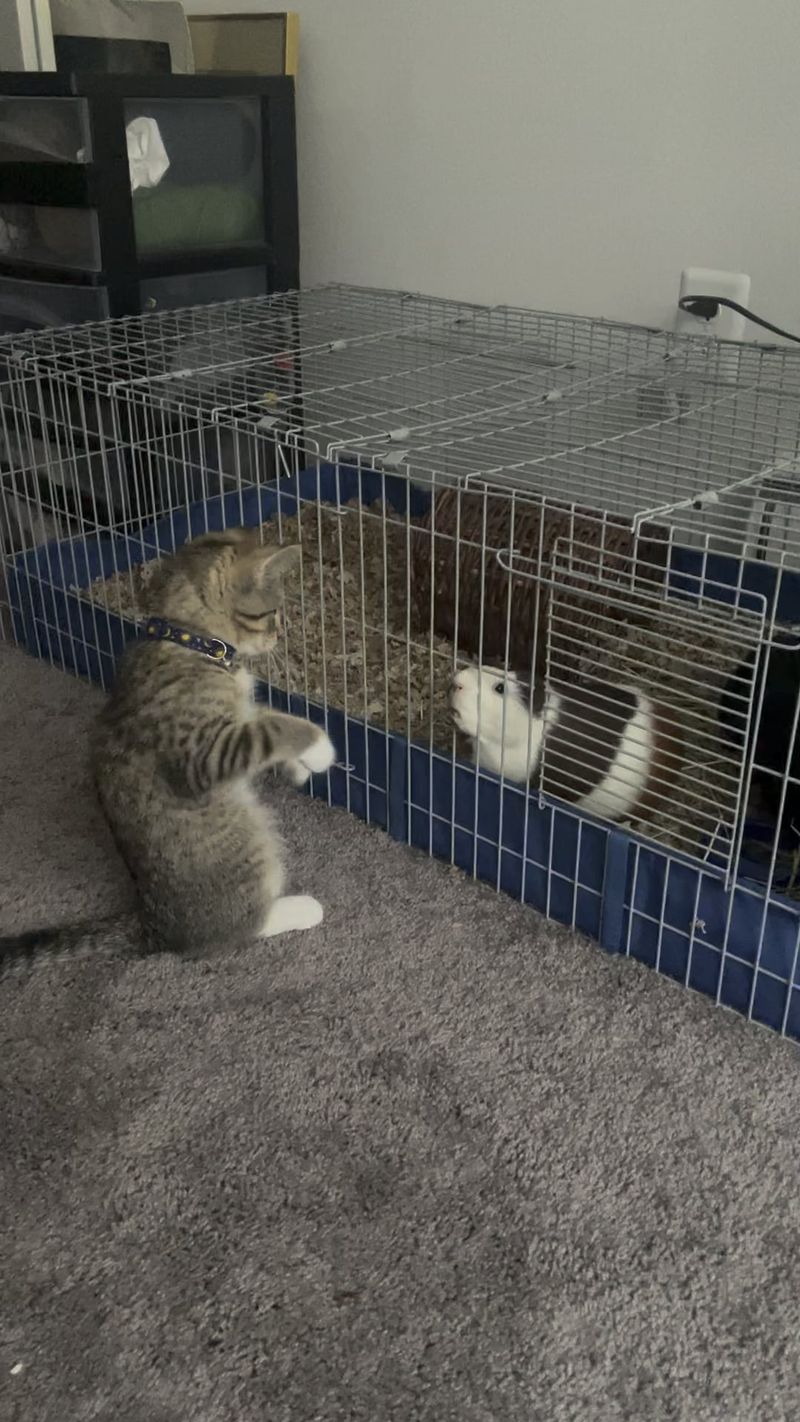
The scent and skittering of a guinea pig can intrigue your cat’s inner hunter. While some cats may simply observe, others might see them as a potential plaything.
Creating a barrier, like a sturdy cage, ensures everyone’s safety. Over time, your cat might just enjoy the companionship of a furry observer, appreciating their antics from afar.
5. Dogs (Especially Large Or Energetic Breeds)

Ever seen a cat cringe at the sight of a bouncing, barking dog? Cats often find large, energetic dogs overwhelming. The constant jumping and barking can be too much for their calm demeanor.
Cats value their personal space, and a playful dog might not respect those boundaries. This can lead to some tension-filled encounters, as cats prefer a quieter, more predictable environment.
6. Reptiles (Lizards, Snakes, etc.)
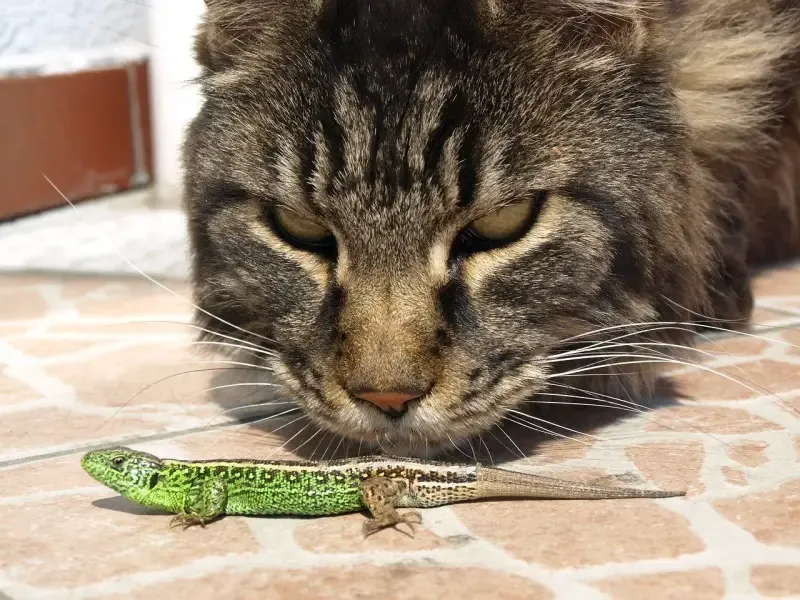
Reptiles move in ways that fascinate and sometimes bewilder cats. Their slithering and sudden darting can be both intriguing and unsettling.
To keep the peace, reptiles should be kept in secure enclosures. This setup allows the cat to observe without interfering, satisfying its curiosity while keeping the reptile safe.
7. Fish (Especially Large Fish Tanks)
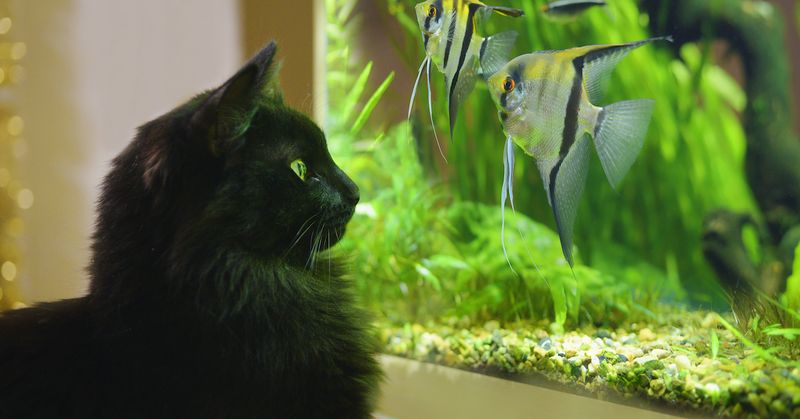
Fish tanks are like moving picture shows for cats. The dancing reflections and gliding fish can captivate them for hours.
However, some cats might get frustrated by the barrier. Ensuring the tank is stable and covered prevents any mishaps, while allowing your cat to indulge its fascination safely.
8. Chickens
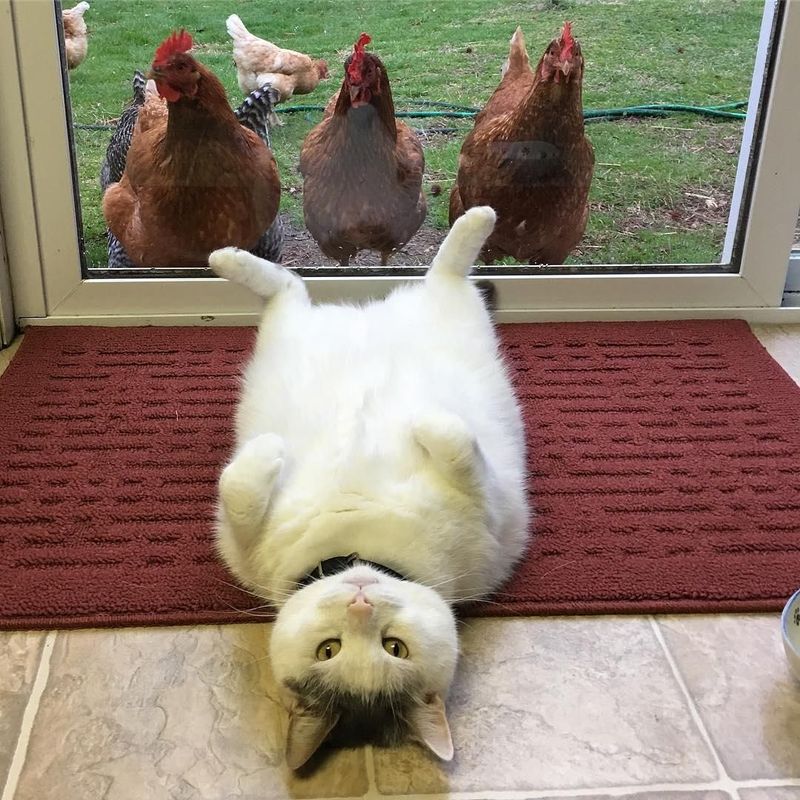
Chickens are noisy and unpredictable, traits that can disturb a cat’s need for calm and order. The sudden flapping and clucking can be unsettling.
For those daring enough to try, a gradual introduction might help ease the tension, allowing both to share the garden without feathers flying.
9. Small Rodents (Like Hamsters Or Mice)

Small rodents are prime targets for a cat’s hunting instincts. Their quick, darting movements can be irresistible.
A secure cage is essential to prevent unwanted interactions. With proper boundaries, both pets can cohabit the same space, providing endless entertainment for your feline without endangering the rodents.
10. Ferrets

Ferrets’ constant motion can be unnerving for cats seeking tranquility. Yet, their playful nature sometimes intrigues a curious cat.
With time and careful introductions, a cat might come to appreciate the playful antics from a distance. It’s all about respect and understanding, giving each space to be themselves.
11. Small Dogs (Especially Calm Or Laid-back Breeds)
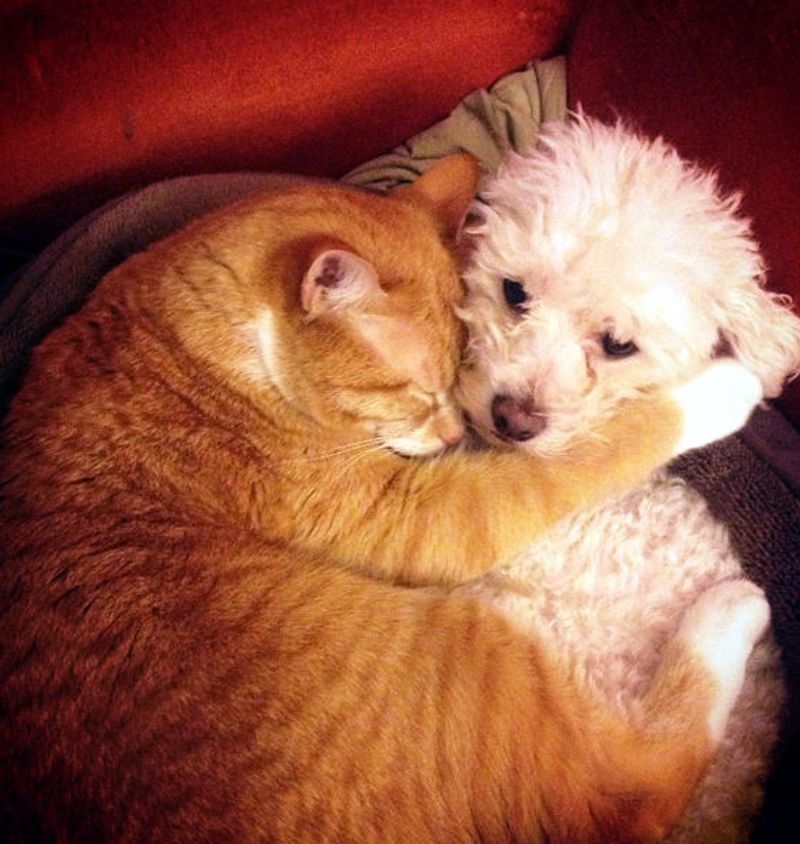
Calm and laid-back small dogs can sometimes melt even the frostiest feline hearts. Their gentle approach and similar size can make a cat feel at ease.
With patience and the right introductions, these unlikely companions might just curl up together, sharing warmth and quiet companionship. It’s a heartwarming scene of unexpected friendship.
12. Kittens

Older cats often take on a nurturing role with kittens. Their tiny meows and playful antics seem to awaken a protective instinct.
This relationship can blossom into a lifelong bond, as the older cat teaches and the kitten learns. Together, they form a duo that supports and entertains each other, making for a harmonious household.
13. Birds (Smaller, Caged Species)
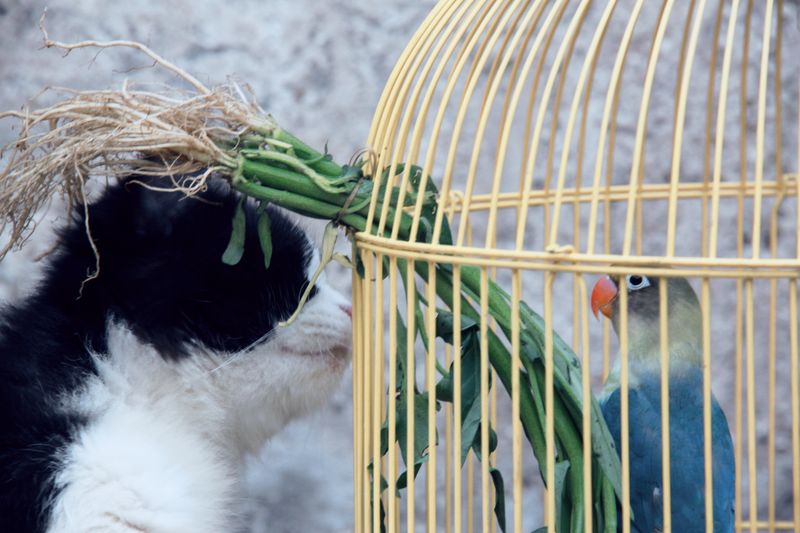
Smaller caged birds can sometimes coexist with cats, especially if introduced carefully. The gentle chirping might even soothe a cat.
Proper introductions and a secure cage are essential. With time, the cat may grow to enjoy the bird’s company, watching without the urge to pounce. It’s a peaceful coexistence built on mutual respect.
14. Rabbits (Especially Calm Or Social Breeds)

While initially wary, cats can warm up to calm and friendly rabbits. Their relaxed demeanor might just put a cat at ease.
With the right introductions, a unique companionship can bloom. It’s a delightful sight to see them lounging together, proving that opposites can attract and coexist peacefully.
15. Guinea Pigs (With Proper Introductions)
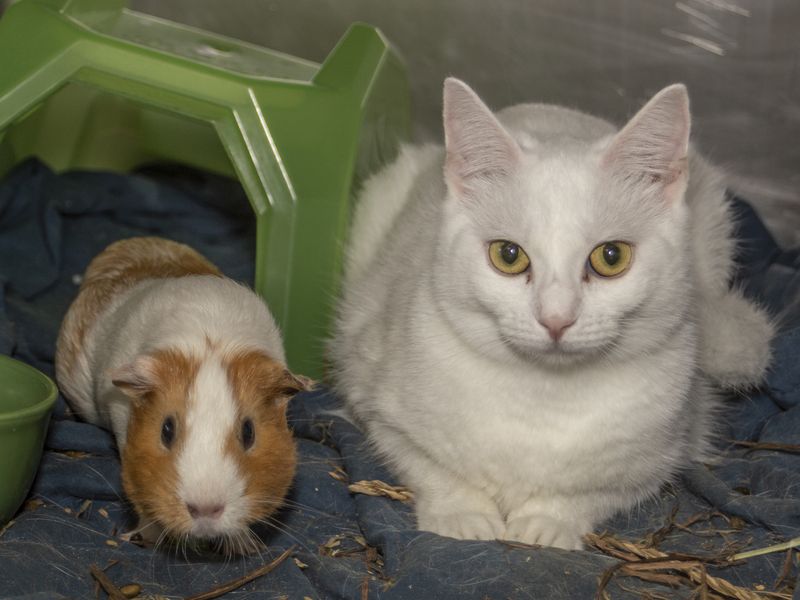
With calm introductions, some cats can learn to appreciate guinea pigs. The gentle nature of a guinea pig might just intrigue a curious cat.
Creating a safe environment with a sturdy cage allows both to coexist without stress. This setup fosters a sense of security, enabling them to share space harmoniously.
16. Other Cats (In A Social Setting Or If Raised Together)
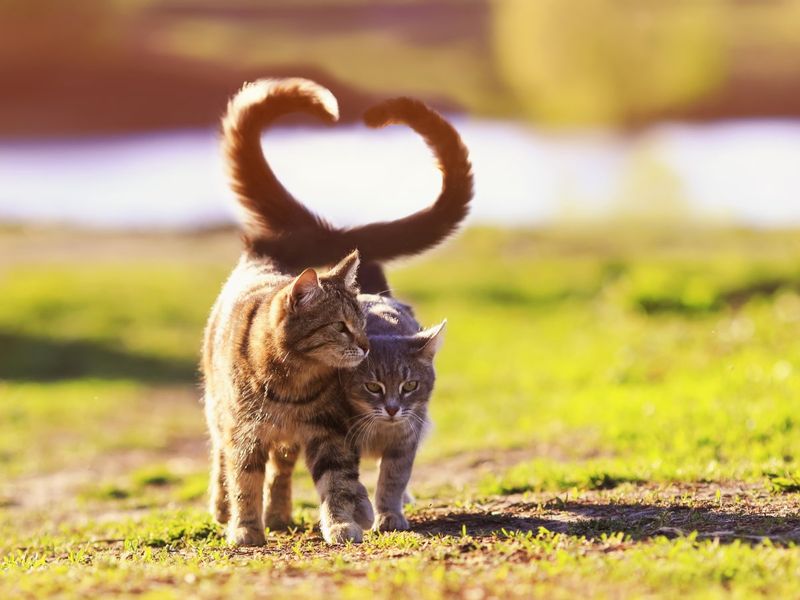
Cats raised together or introduced in a social setting often develop strong bonds. Their shared history builds a sense of trust.
With patience and gradual introductions, they can become lifelong companions, sharing toys and affection. It’s a relationship rooted in understanding, proving that even the most independent animals can form lasting friendships.
17. Turtles (If Kept In Separate Enclosures)

Turtles might seem like unlikely friends, but their slow movements don’t threaten a cat’s sense of control. A secure enclosure ensures a peaceful coexistence.
The cat can observe without interfering, satisfying its curiosity while respecting the turtle’s space. It’s a unique friendship built on observation and respect, showing that even the most different creatures can get along.


